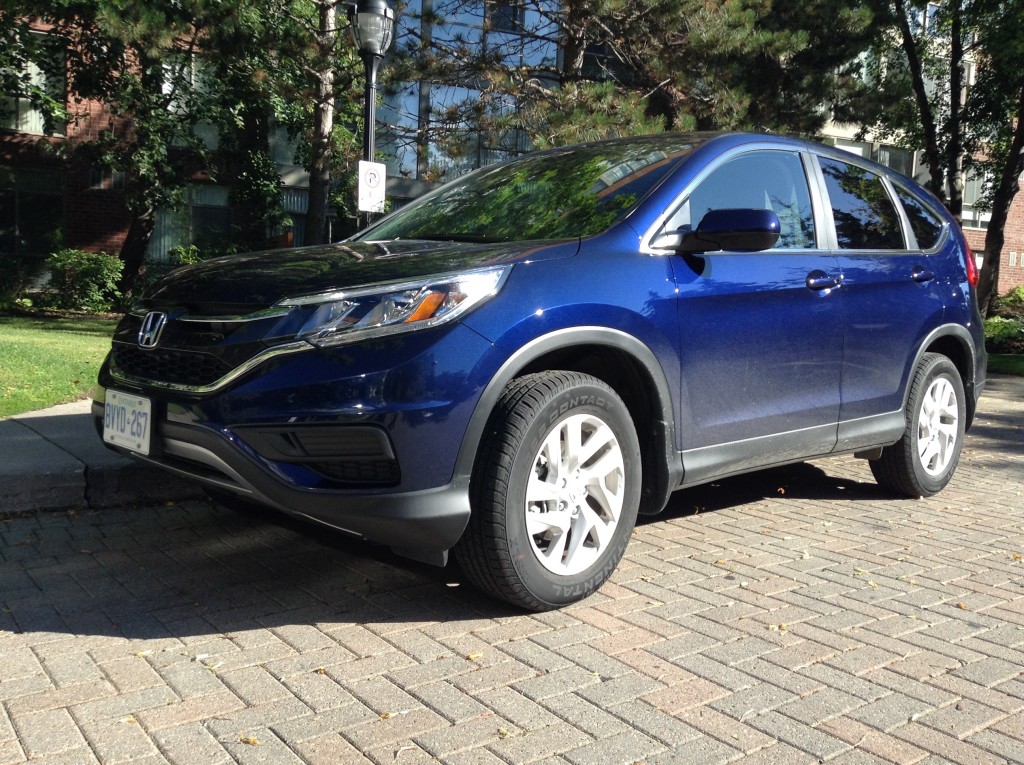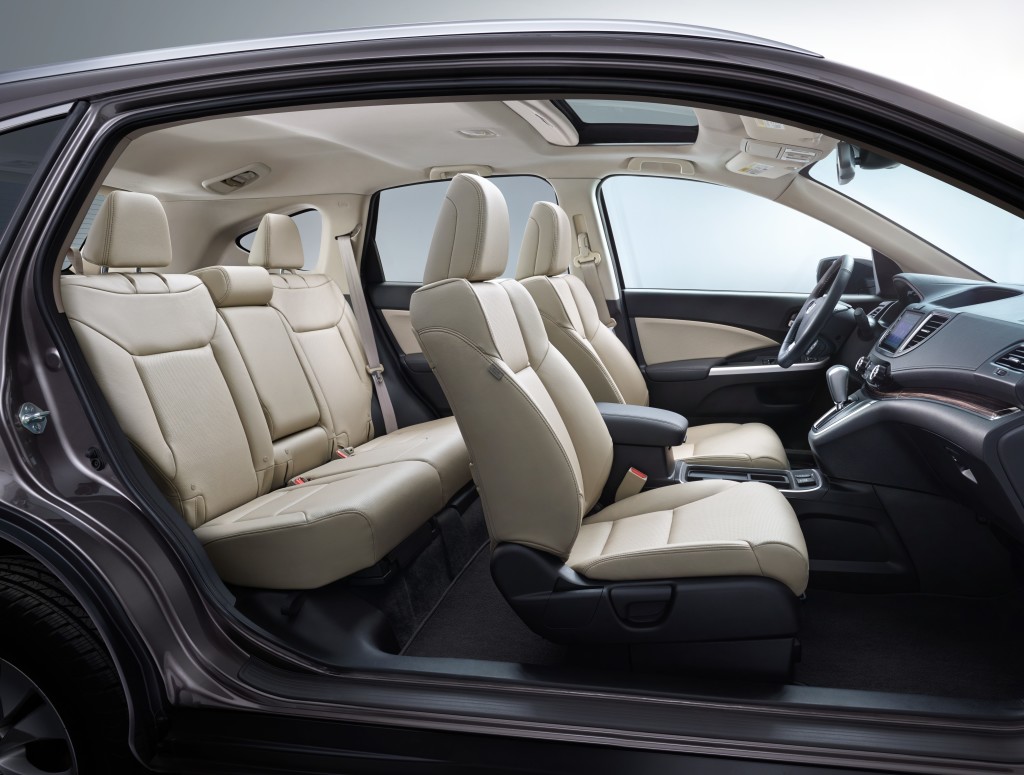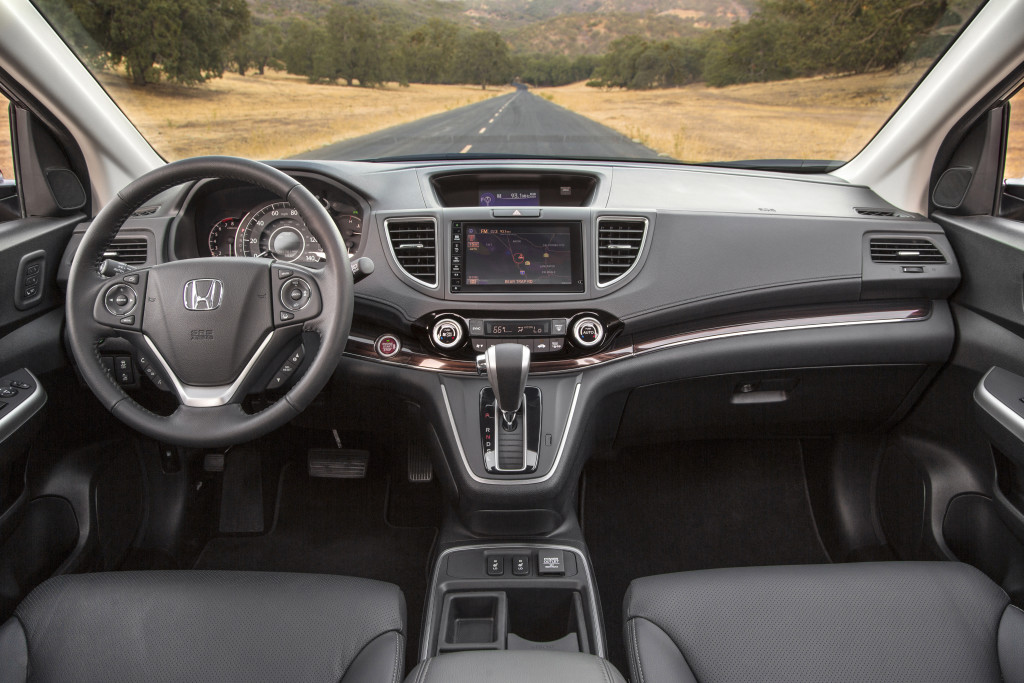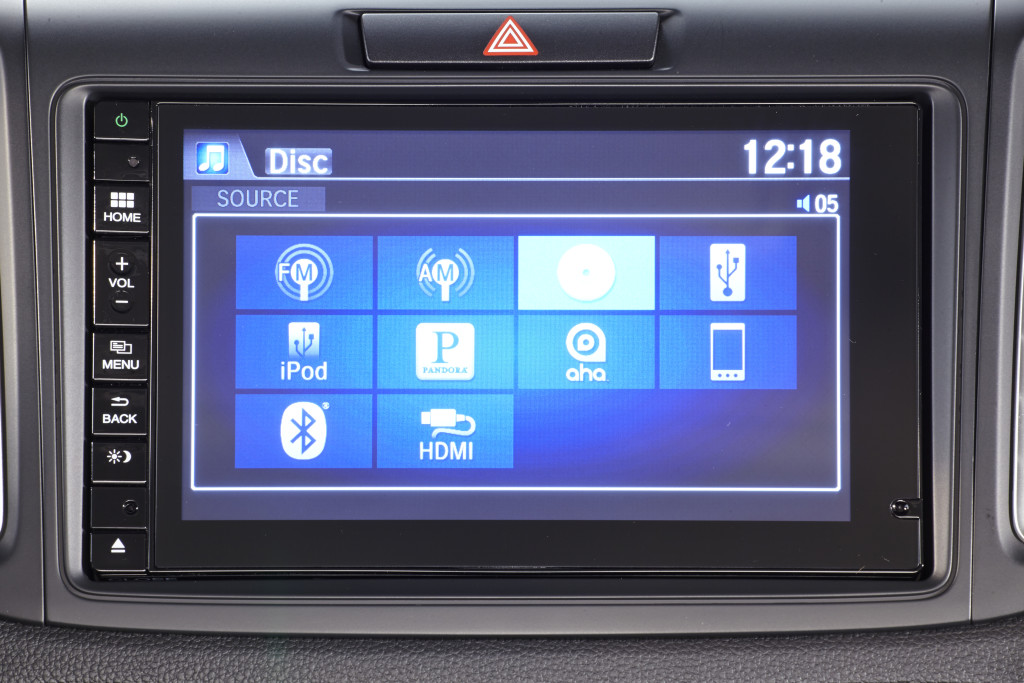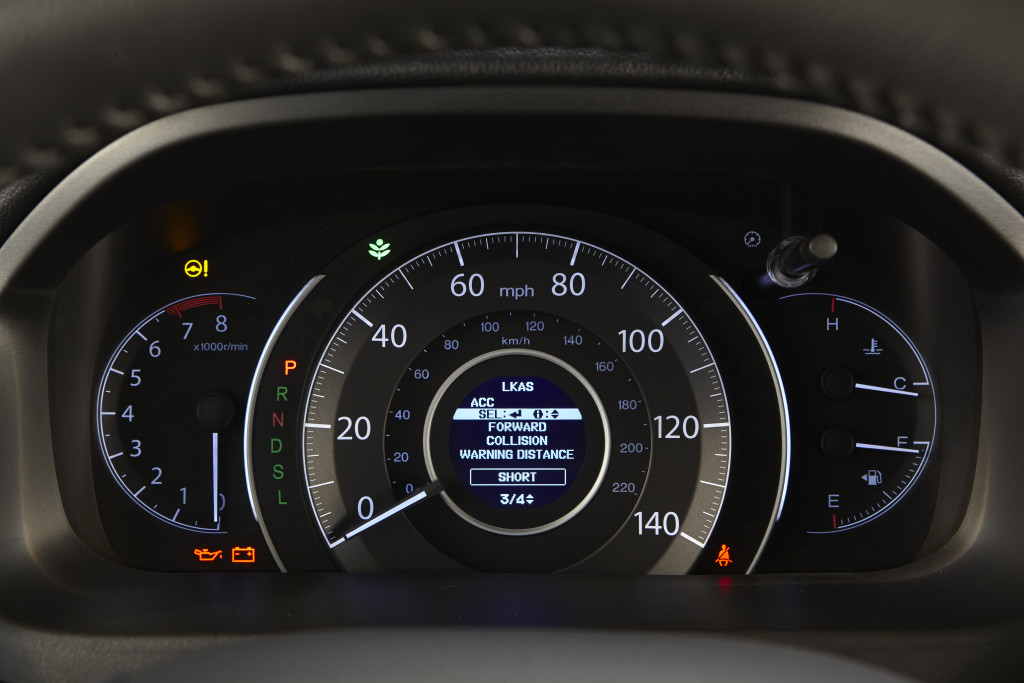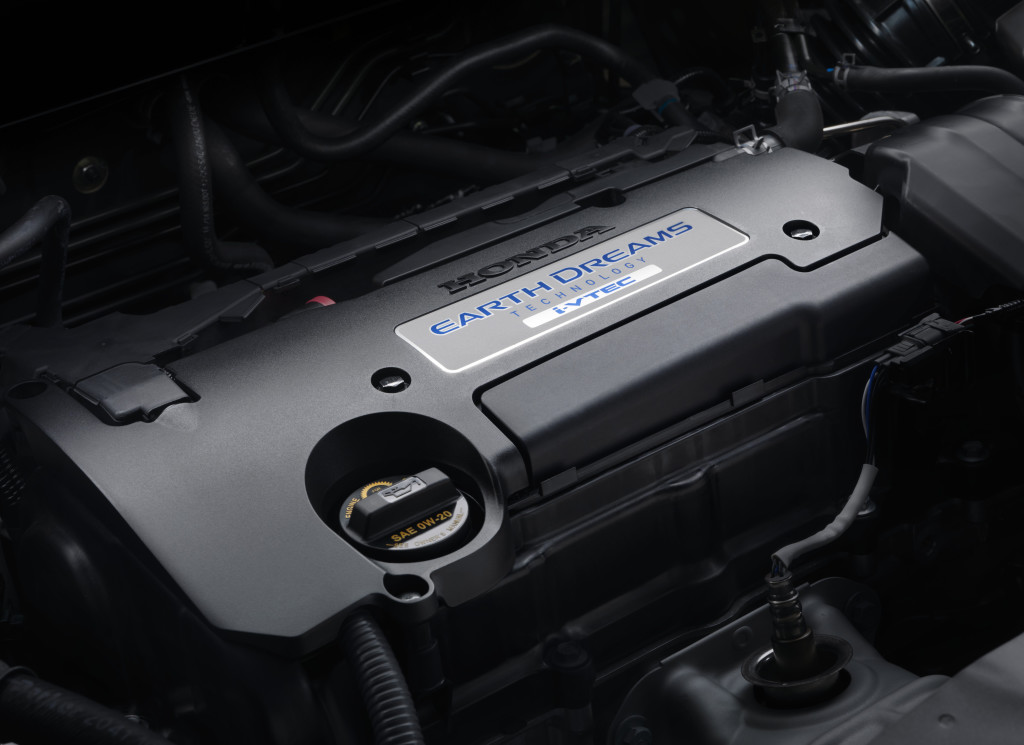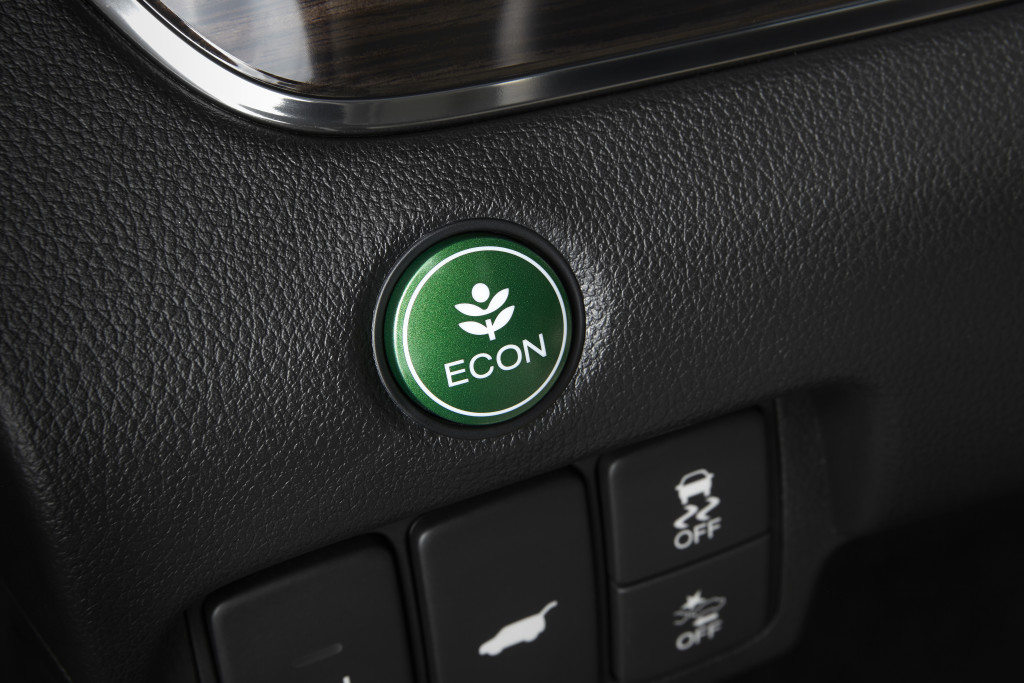Compact sport utility vehicles were first driven off auto dealer lots in the late 1990s. The baby siblings of lumbering SUVs that were taking over North American roads, these CUVs, or crossovers, retained much of the utility of larger vehicles while enabling drivers to do things like park their vehicles in spots meant for cars and avoid the need to pull bank jobs before pulling up to the pump.
It’s a testament to their practicality that even the first crossovers to achieve prominence in the North American auto market are still going strong. Honda Canada recently leant me an Obsidian Blue Pearl Honda CR-V SE AWD for a week, and it was easy to see why this model continues to sell.
Let’s start with the “buy local” angle: CR-Vs are manufactured at Honda’s manufacturing facilities in Alliston, Ontario (same birthplace as my 17-year-old Civic) and East Liberty, Ohio.
First impressions
The CR-V’s overall design has morphed gently from the original ‘90s boxy design to the current “aero” body that flows from the upturned skid plate and front fascia to the sloped rear window.
The 2015 model, the result of a mid-model redesign, sports slightly different lines, new headlights and other details. It’s a little longer and offers extra noise mitigation and crash absorption.
Interior
Let’s start with the obvious: I had no problem fitting my 6’5″ frame in either the front or back seats.
New to the 2015 Touring model, the available two-position memory seat accommodates a second driver of different stature at the push of a button rather than the loads of unwanted fiddling many drivers grumble through when they share a vehicle.
Chrome and wood accents dress up a still-utilitarian interior that lives up to the original vision of usefulness that drove the introduction of CUVs.
Other new available features include a power tailgate and Display Audio (more on that later).
Honda retains the curved back-seat spy mirror that appears when you pop down the sunglass holder embedded in the ceiling. It’s a great device for parents who want to monitor their progeny’s behaviour without turning their heads. The lucky progeny, by the way, get their very own heating/cooling vents.
Cargo capacity
The CR-V had no problem toting my hockey bag. This picture suggests it could hold four such behemoths without folding down the rear seats.
There was no cargo cover on my tester. That’s standard equipment on the EX, the next model up the chart.
The downside of a cavernous hatch is the length people must reach to lower the rear seats. In some cases, you need to crawl into the hatch to do this. In the 2015 CR-V, latches on either side of the hatch opening unhitch the relative sides of the 60-40 split folding rear seats.
In-car technology
Honda-approved smartphone apps communicate with the vehicle’s touchscreen via the HondaLink app which, along with the accompanying website, also serves as an “information dashboard” for the vehicle.
Getting started with HondaLink is as easy as scanning the vehicle identification number (VIN) barcode on the inside of the driver’s door frame using the smartphone app. Once you do this, you can use the free apps Launcher (to organize your centre console) and Aha (to tap into your subscription). Additional charges apply for Honda’s Navigation app. Phones communicate with the CR-V via HandsFreeLink.
Honda’s new 7-inch capacitive touchscreen Display Audio telematics interface ships as standard equipment on SE and above trim levels.
Unfortunately, the system is still as ho-hum as most other original-equipment offerings on the market. At some point, carmakers (not just Honda) must recognize the need to make these interfaces as easy to use as people’s phones. I repeat my exhortation for carmakers to accept Google’s and Apple’s interfaces on the dashboard and let drivers easily switch between apps that are safe to use in a moving automobile. That will take coordination between carmakers, Apple, Google and app developers, but it will be worth the effort.
The CR-V’s Smart Entry system is what more cars, not just the posh ones, need to offer. It goes beyond the cool factor of keyless entry and the start/stop engine button. Locking doors means merely pushing a button on the outside door handle. Drivers need not handle the key fob and, if drivers forget the fob in the Honda, the vehicle doesn’t lock. It’s a great solution for the distracted. (Drivers of the LX – i.e. base – CR-V must, unfortunately, continue to rely on their good sense to not lock themselves out of the vehicle.)
A full-colour “intelligent” Multi-Information Display (i-MID) in the dash offers information that drivers choose using controls on the steering wheel.
Driving
Honda strikes a balance between in-town manoeuvrability and highway manners with its Earth Dreams Technology™ 2.4-litre, direct-injected DOHC i-VTEC engine. Honda claims better performance, cruising efficiency, 185 horsepower (same as the previous engine) and an 11 percent increase in peak engine torque.
The continuously variable transmission (CVT, standard across all trim levels) offers two automatic modes outside of the familiar D setting.
- S offers more performance-oriented (i.e. sporty) driving. (No needless paddle shifters on this automatic).
- L is for lower speeds and provides additional engine braking.
Fuel efficiency
The CR-V manages fuel consumption ratings of 8.6/6.9/7.8 L/100km (city/highway/combined) for front-wheel-drive models (the LX), and 9.1/7.2/8.3 L/100km for the Real Time AWD models (all other trim levels). The tanks holds 58L of fuel.
Several technologies work together to help the CR-V achieve these fuel efficiency numbers.
- The CVT keeps the engine revving in its sweet spot. Honda designed this CVT with an overall ratio range 33 percent wider than the 5-speed automatic transmission it replaces.
- Honda reduced the engine’s weight by 1.3-percent using a lighter block design, a new plastic cam cover and a more efficient accessory belt design.
- Press the (obviously) green ECON button and Honda’s Eco Assist system kicks in to control the performance of the engine, transmission, cruise control and air conditioning.
Some drivers like to know how much fuel they’re conserving as they drive. For these drivers, Honda bypassed extra digital readouts (and the attendant contribution to information overload) in favour of curved bars to either side of the speedometer. (See the image of the dashboard earlier in this post. The left bar is just to the left of the P-R-N-D-S-L indicator.)
Those bars change colour to tell you whether your foot is made of lead or leaves.
- Green means fuel efficient driving.
- Light green, not so much.
- White is, well, not the colour of innocence.
Safety features
Honda puts the usual stuff into all trim levels and adds technologies as you go up the trim level chart.
The top-of-the-line Touring model features a Lane Keeping Assist System (LKAS). It uses a front-facing camera to look for lanes on the road. If it spots a lane (faded lane markers might not be visible to the LKAS) and the driver strays from said lane without signaling, a warning sounds.
The LKAS only works between 72 and 145 km/h. Drivers who do anywhere near 145 km/h better hope that Honda also provides a POAS (Police Officer Avoidance System), a feature I couldn’t find in the documentation.
Also in the Touring model, a collision mitigation braking system (CBMS) kicks in if it detects a possible frontal collision. It starts at stage one by giving the driver audible warnings. If the driver doesn’t react right away, the CBMS engages stage two and throws in light braking. Driver unresponsiveness triggers stage three, which involves strong braking and a desperate desire to avoid stage four (my euphemism for the consequences of ignoring stages one through three).
Pricing
Honda sells the CR-V SE-AWD I tested for $31,759.75 MSRP. The base CR-V LX-2WD runs $27,859 MSRP.
Conclusion
Station wagons were the people/cargo transporters of yesteryear. Minivans provided taller, practical alternatives. SUVs, despite their image, served many (most?) of their buyers as minivans. CUVs took over from SUVs in urban centres and beyond.
In the current evolutionary stage of the automotive market, Darwinian elements have ensured continued success for the CR-V (as well as many of its worthy CUV competitors). Given its continued evolutionary path. I expect CR-Vs to thrive for years to come.
